Abstract
This paper describes the application of numerical methods to the arrangement of four leishmanial strains according to their reactivity and cross-reactivity in tests of parasite agglutination, indirect immunofluorescence and passive cutaneous anaphylaxis with antisera prepared by immunization or infection of rabbits, guinea-pigs and mice. Using corresponding pools of animal sera as test 'reagents' the antigenic reactivity of the four leishmanial strains (L. enriettii, L. tropica major, L. aethiopica and L. mexicana amazonensis) was scaled by reference to end-point serum titres; and antigenic relationships between individual strain pairs were expressed as mean similarity coefficients, giving equal weight to the results of the different serological tests. Overall analysis of the results revealed that L. mexicana amazonensis and L. tropica major were the two most closely related strains, clustering with an overall similarity coefficient of 89%, whereas coefficients of similarity between other strain combinations fell between 75 and 80%. Although different sera had different discriminatory capacity for the leishmanial strains, two combinations of serum reagent and test system yielded relationships between the four strains that most closely approximated to the overall values. These were: (a) immunofluorescence tests with mouse antisera; and (b) agglutination tests with selected rabbit antisera. The results illustrate the use of a number of immunological parameters in relating micro-organisms of a given genus, and reveal a serological classification of the four leishmanial strains at variance with their geographical origin.
Full text
PDF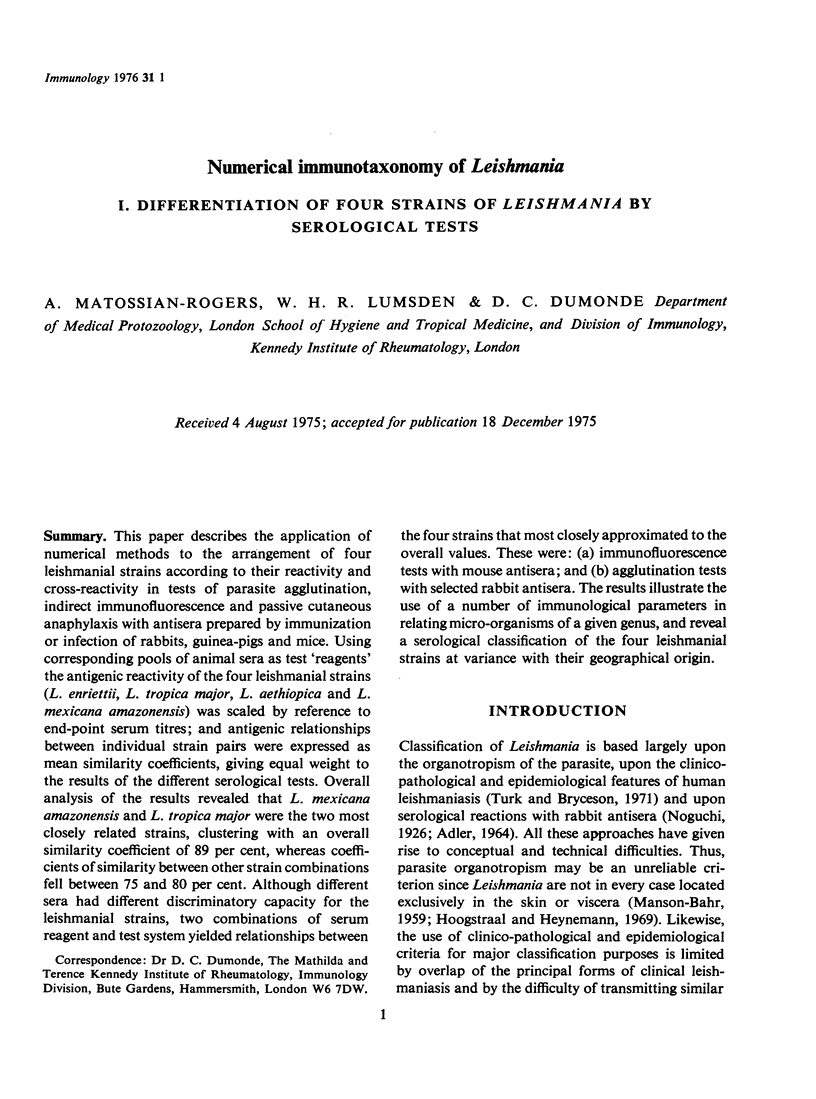
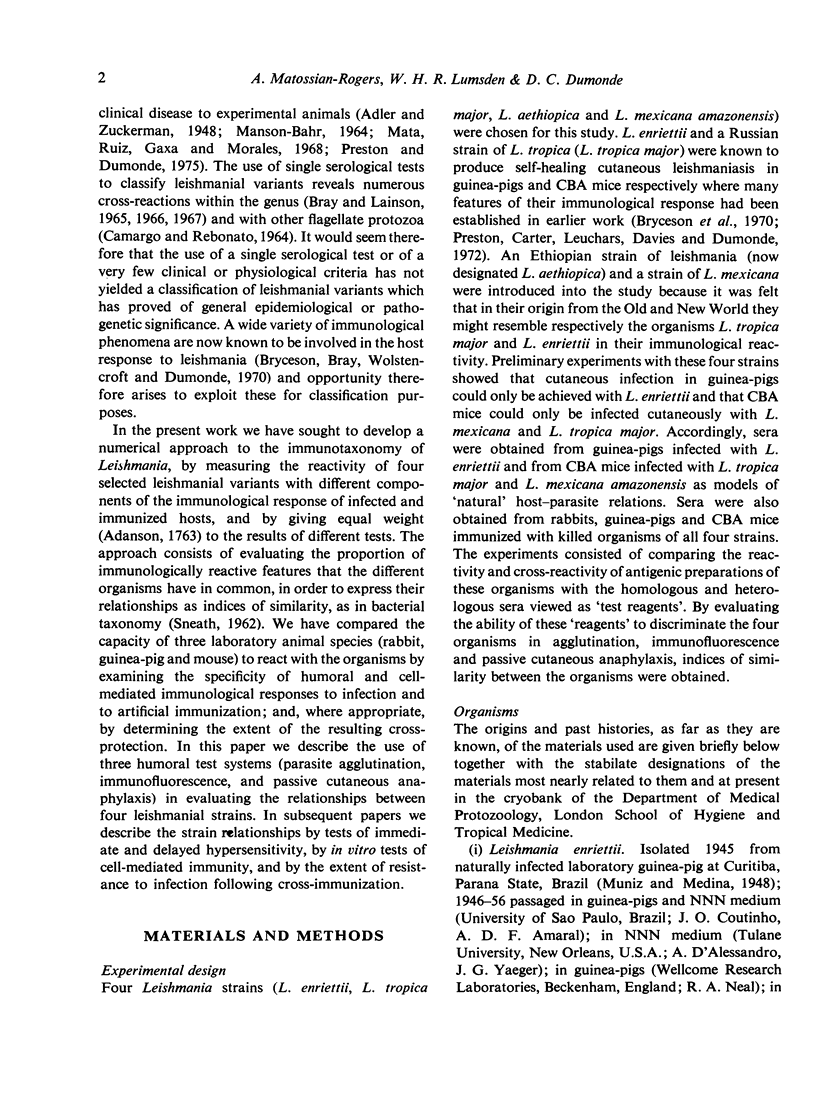
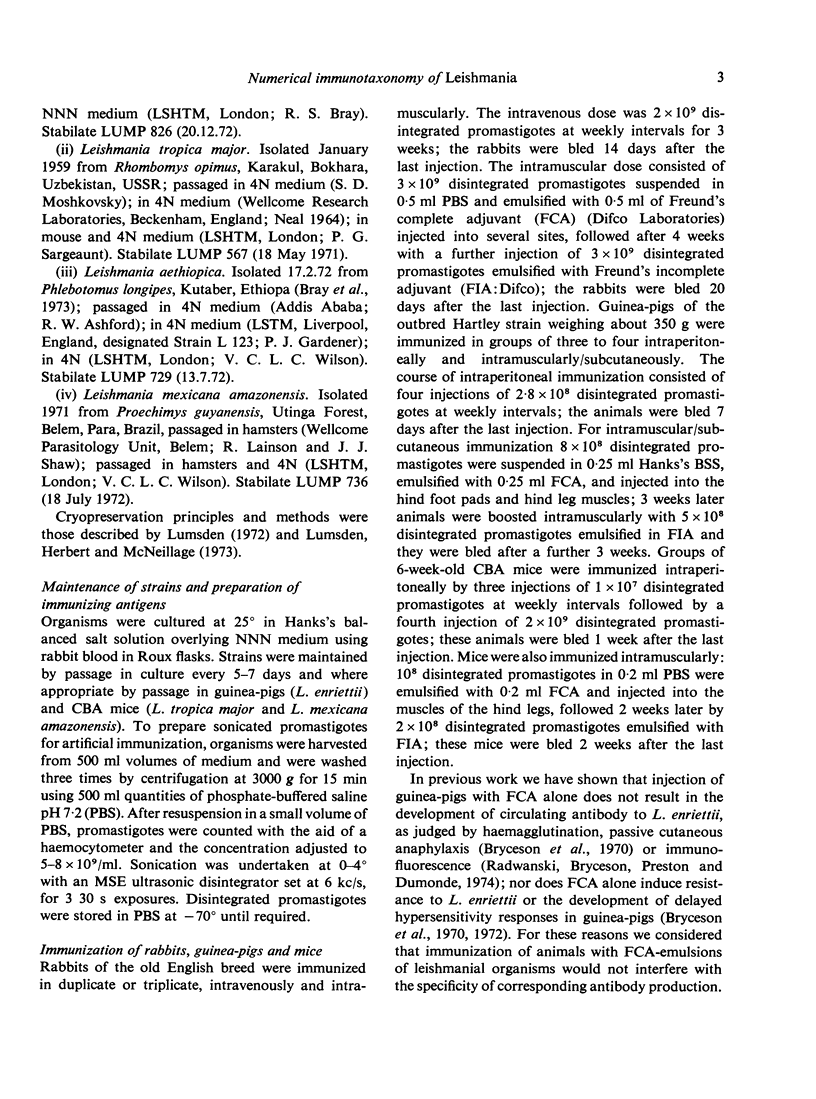
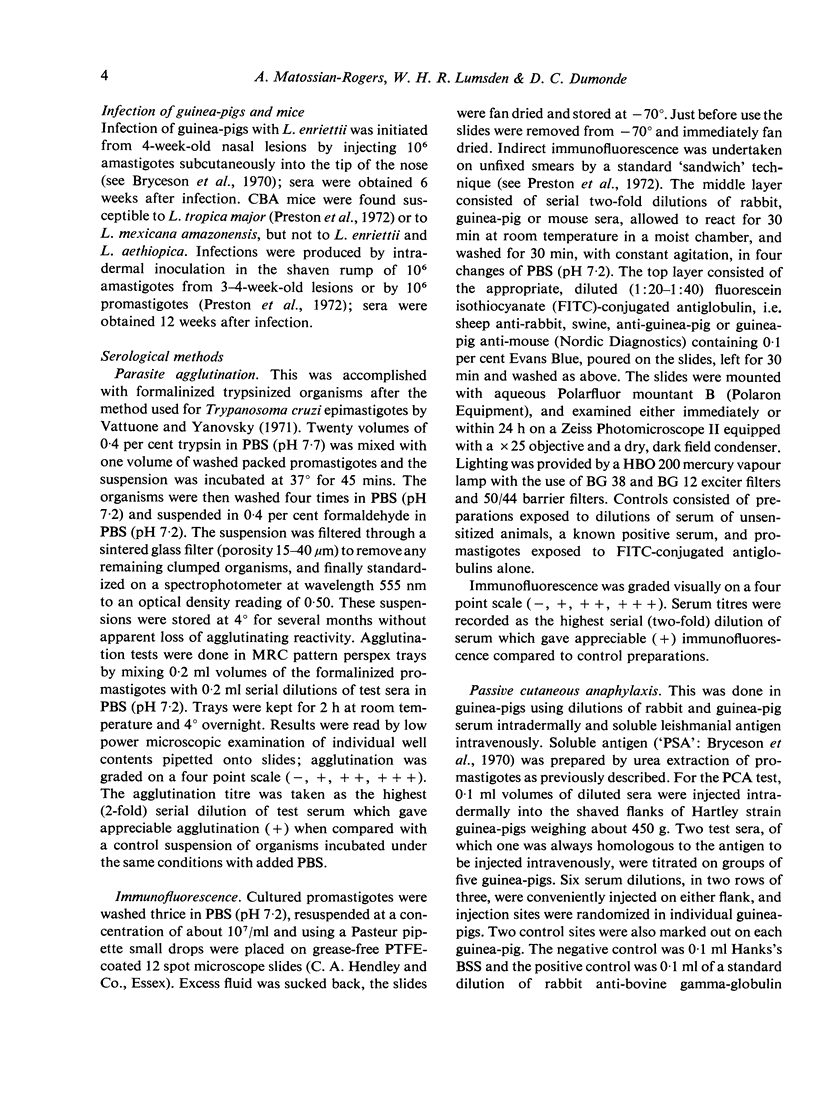
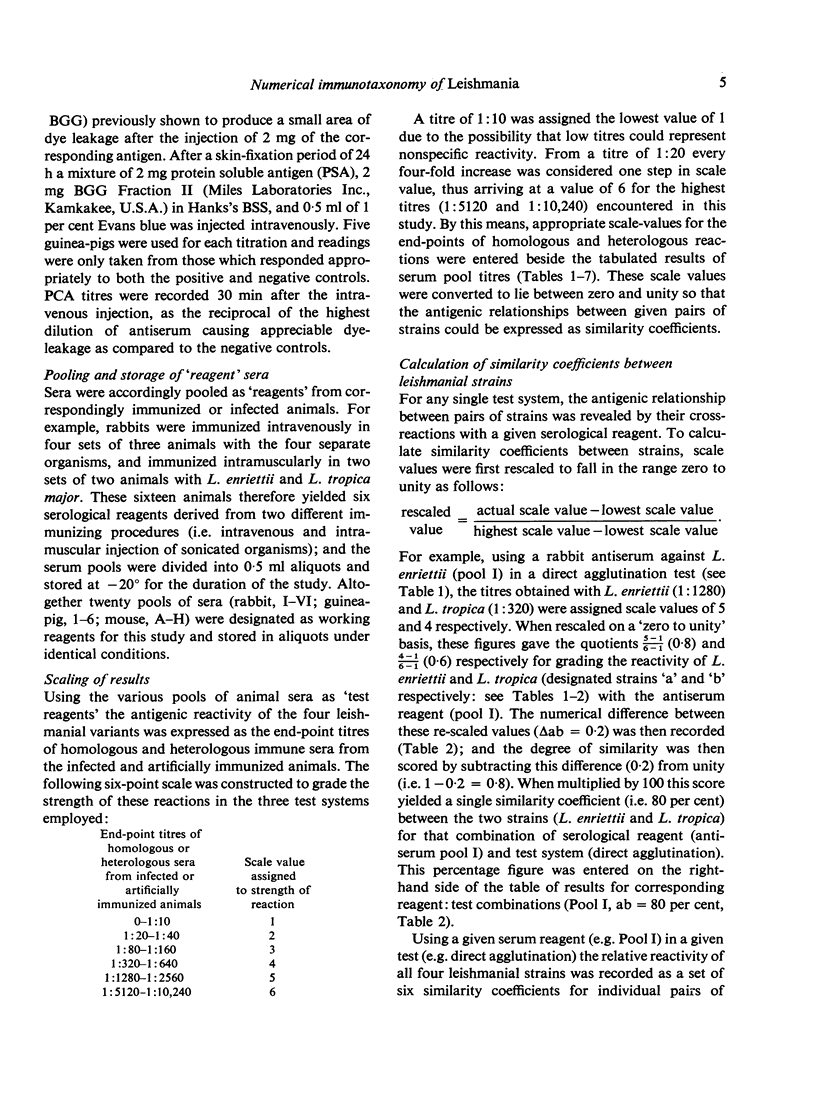
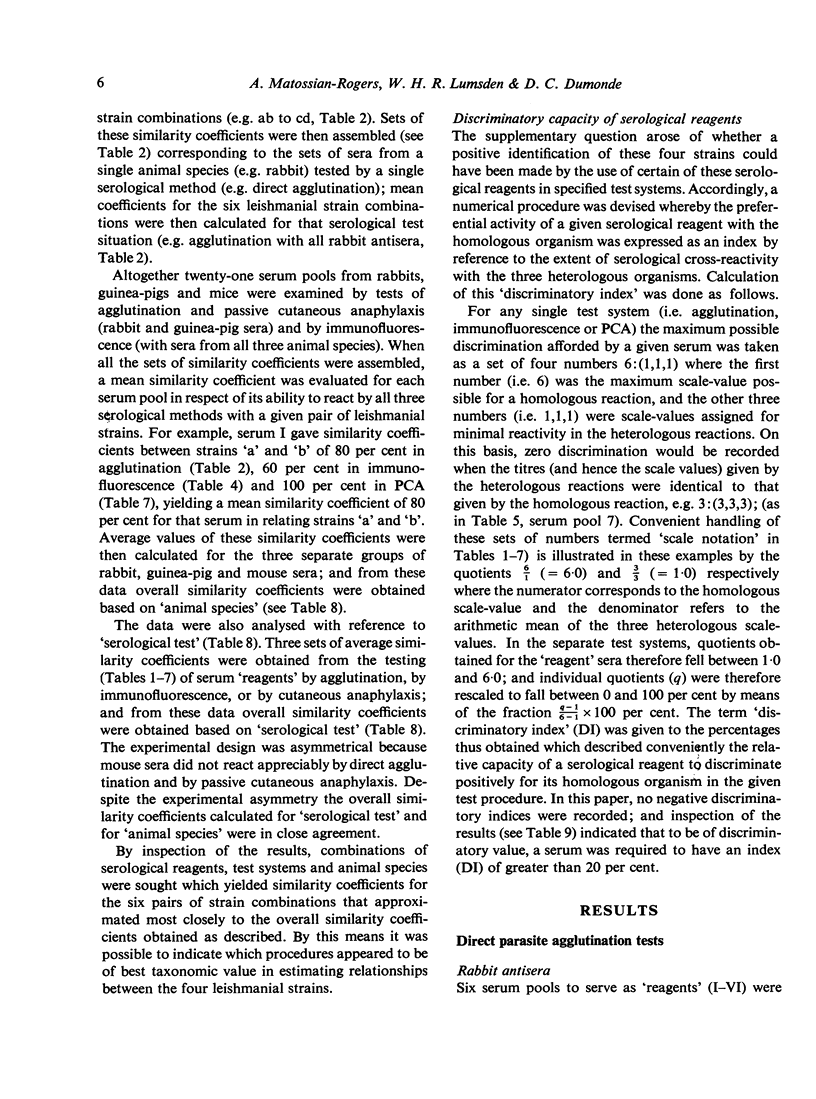
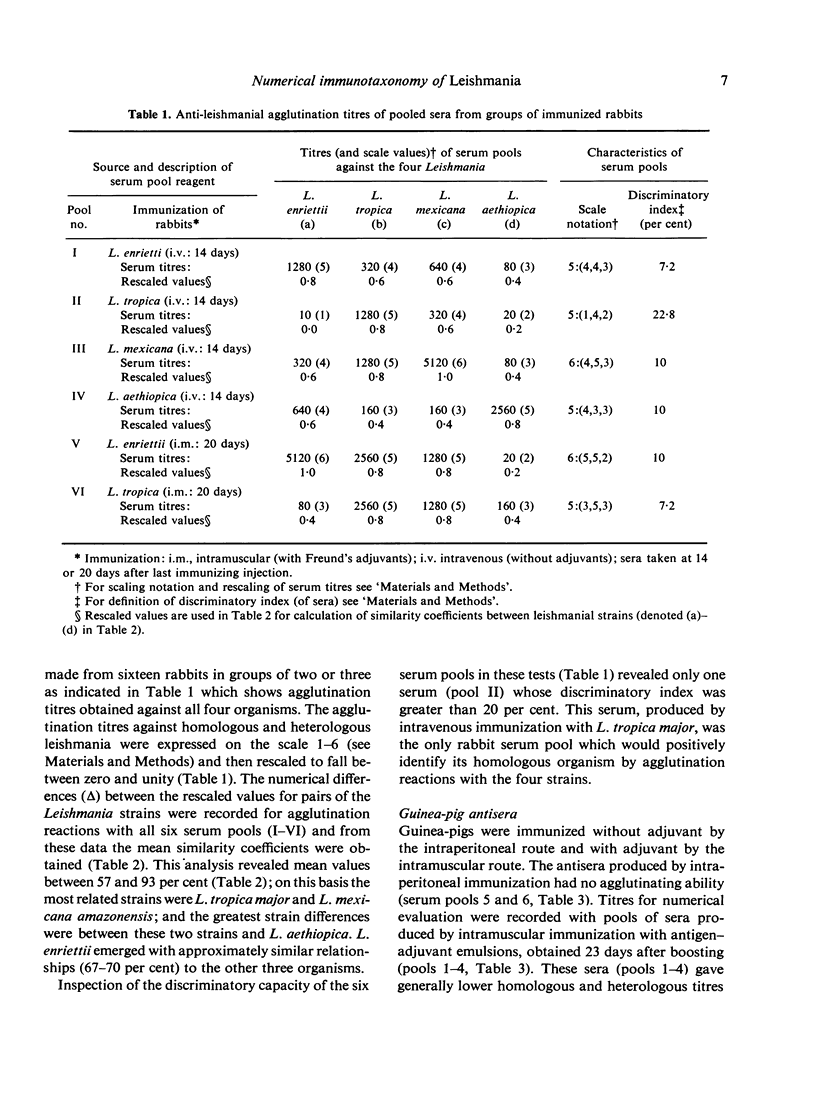
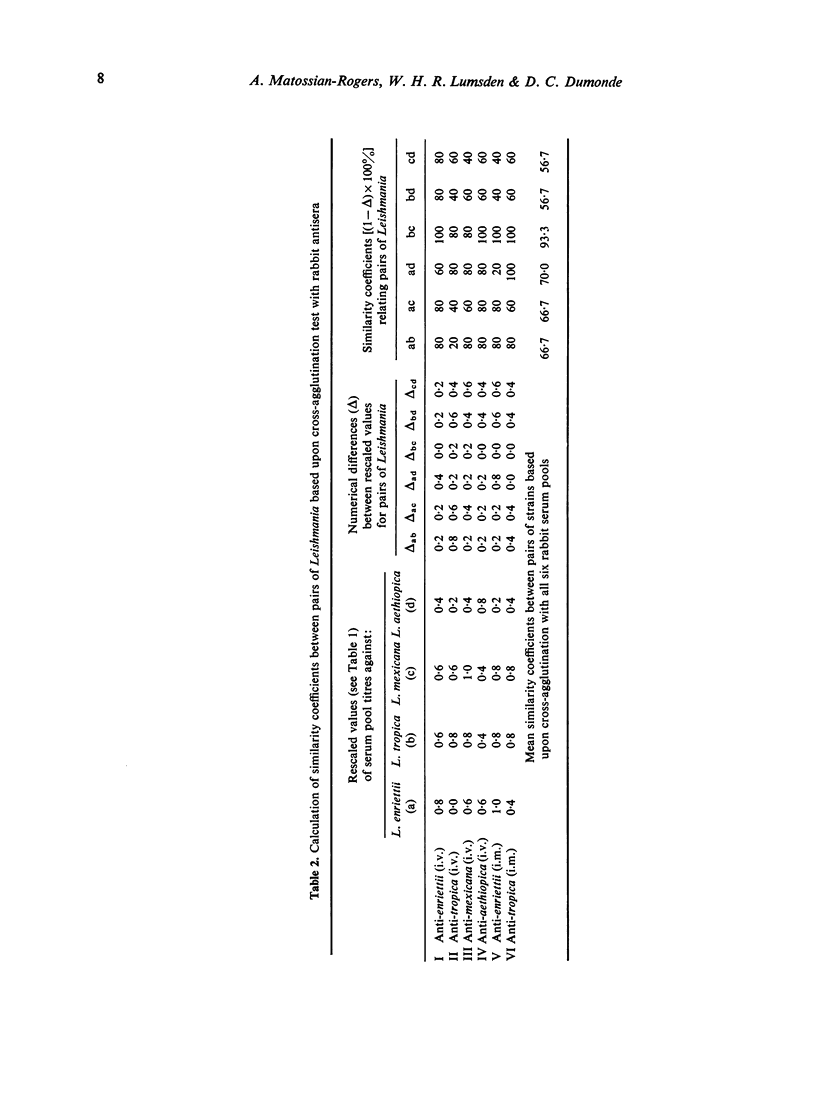
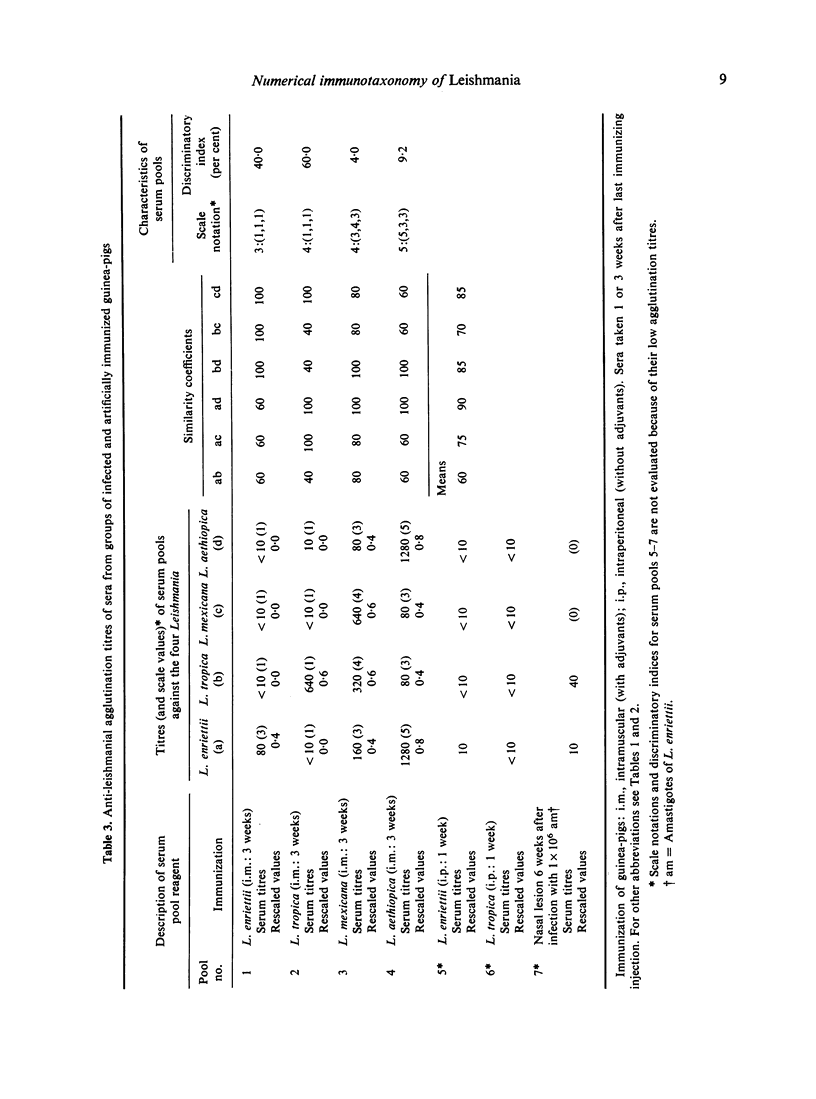
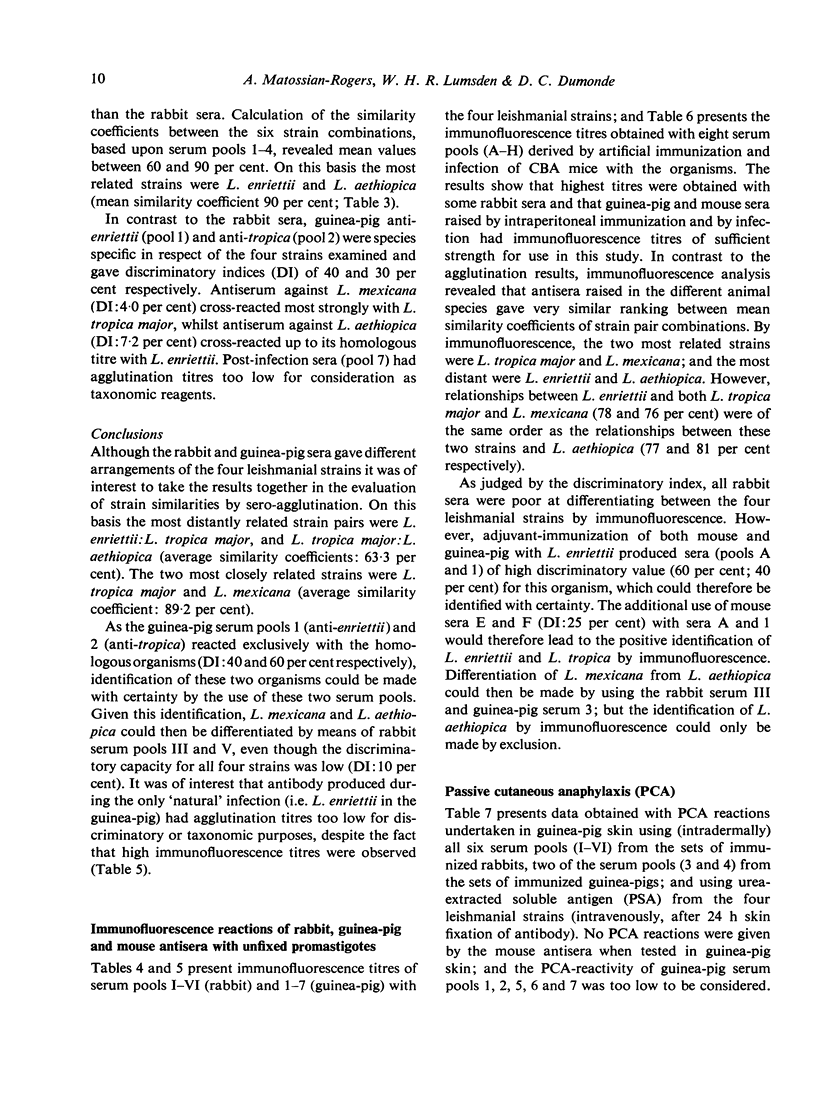
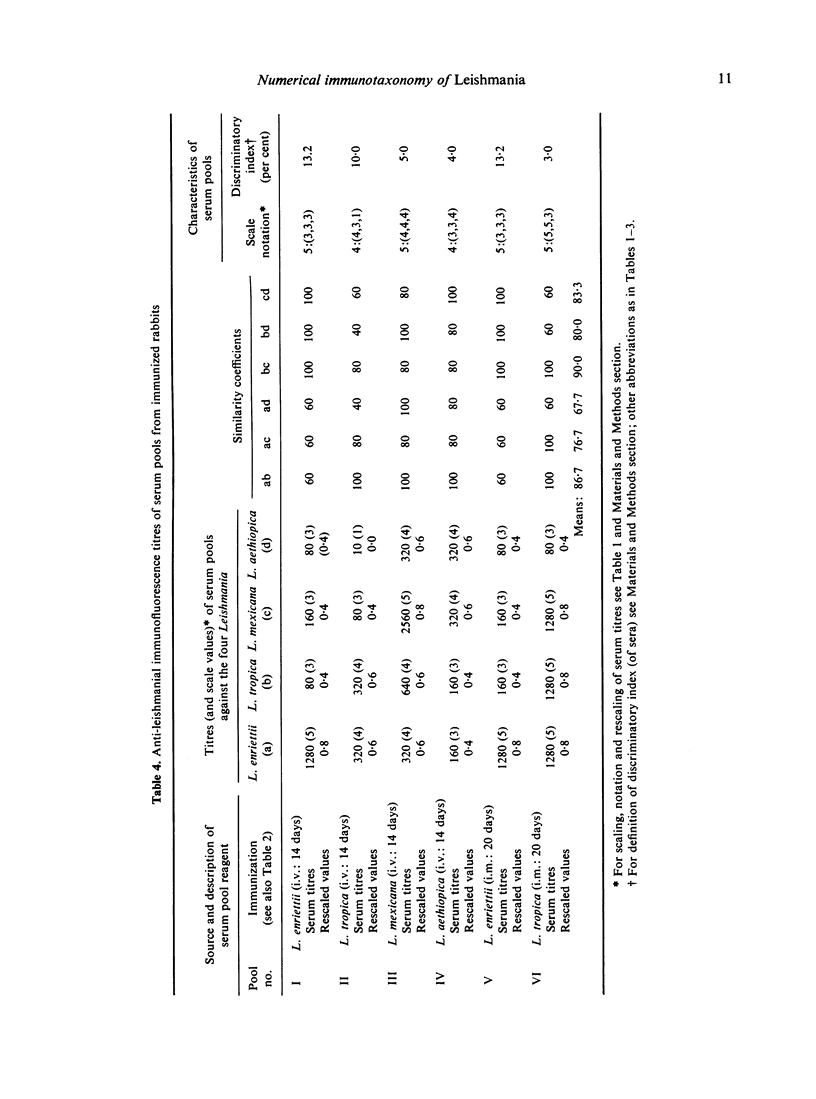

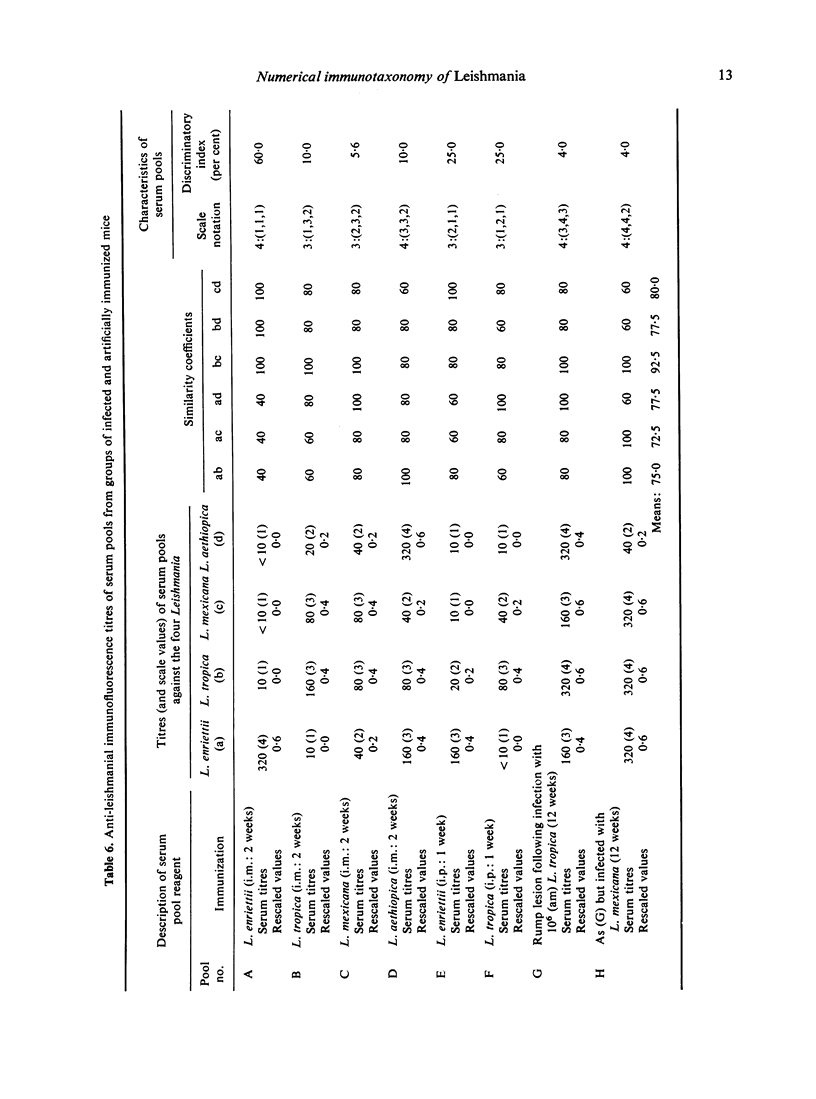
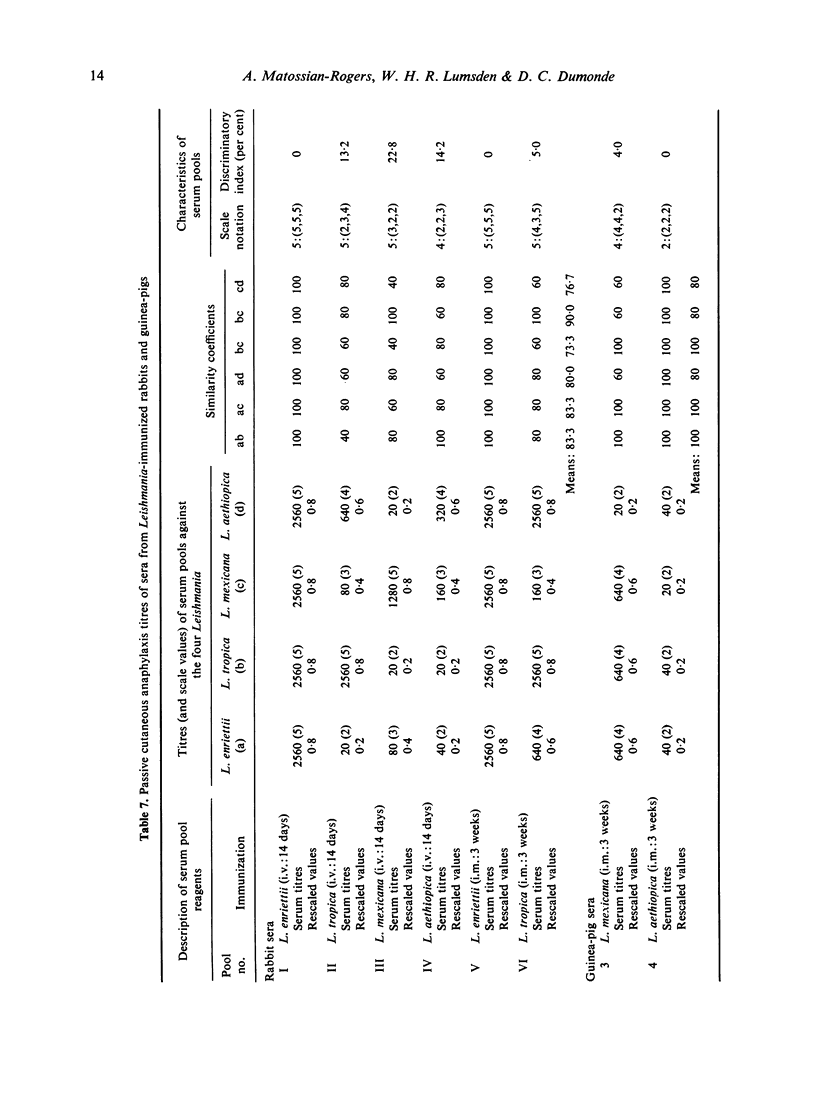
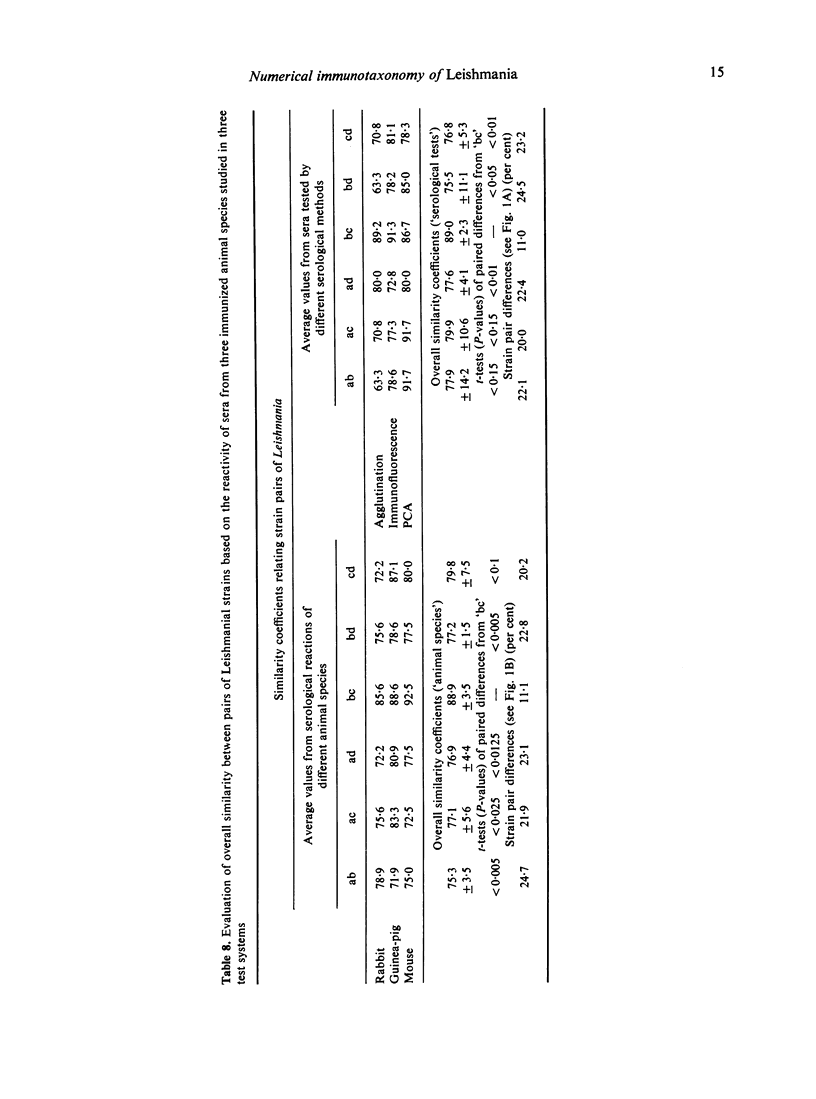
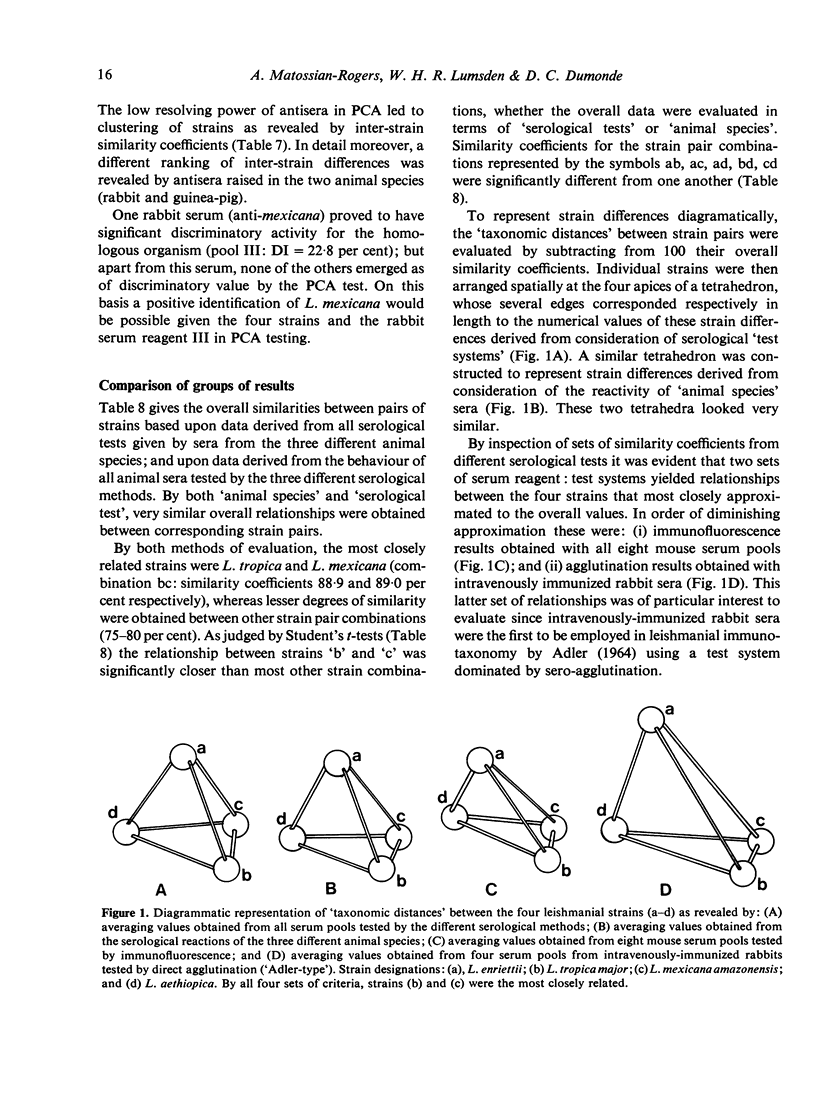
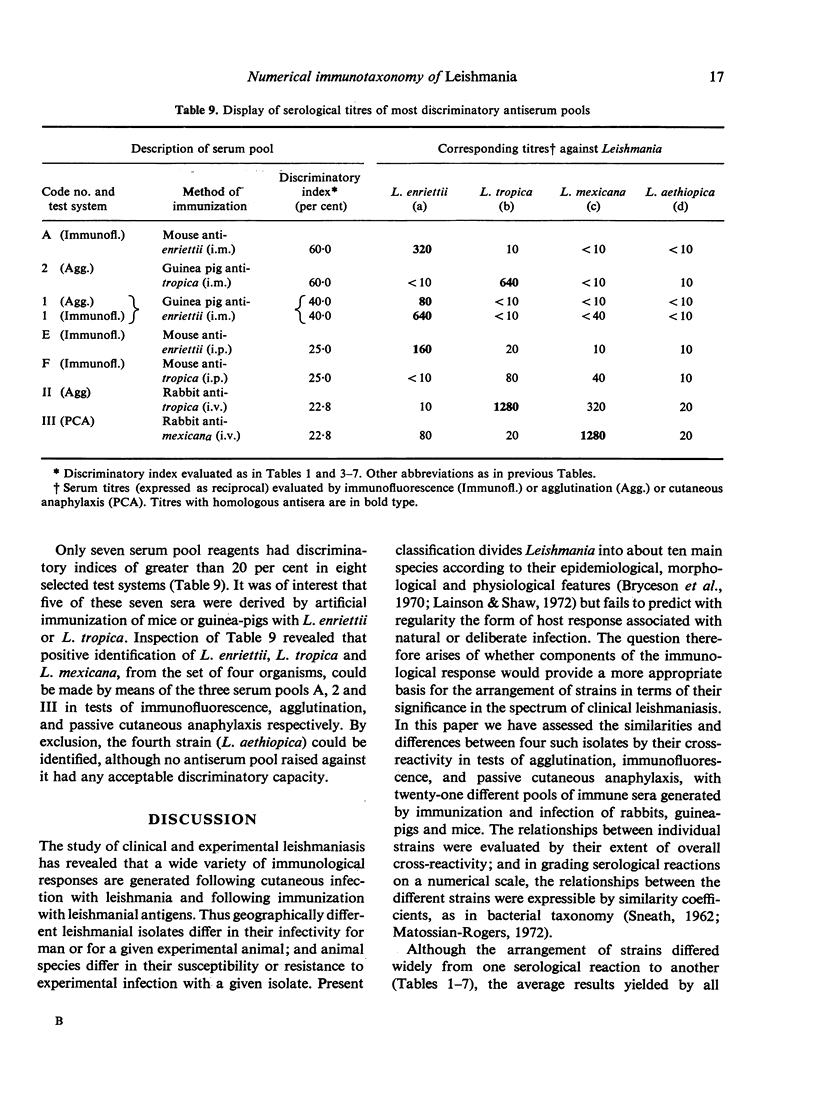
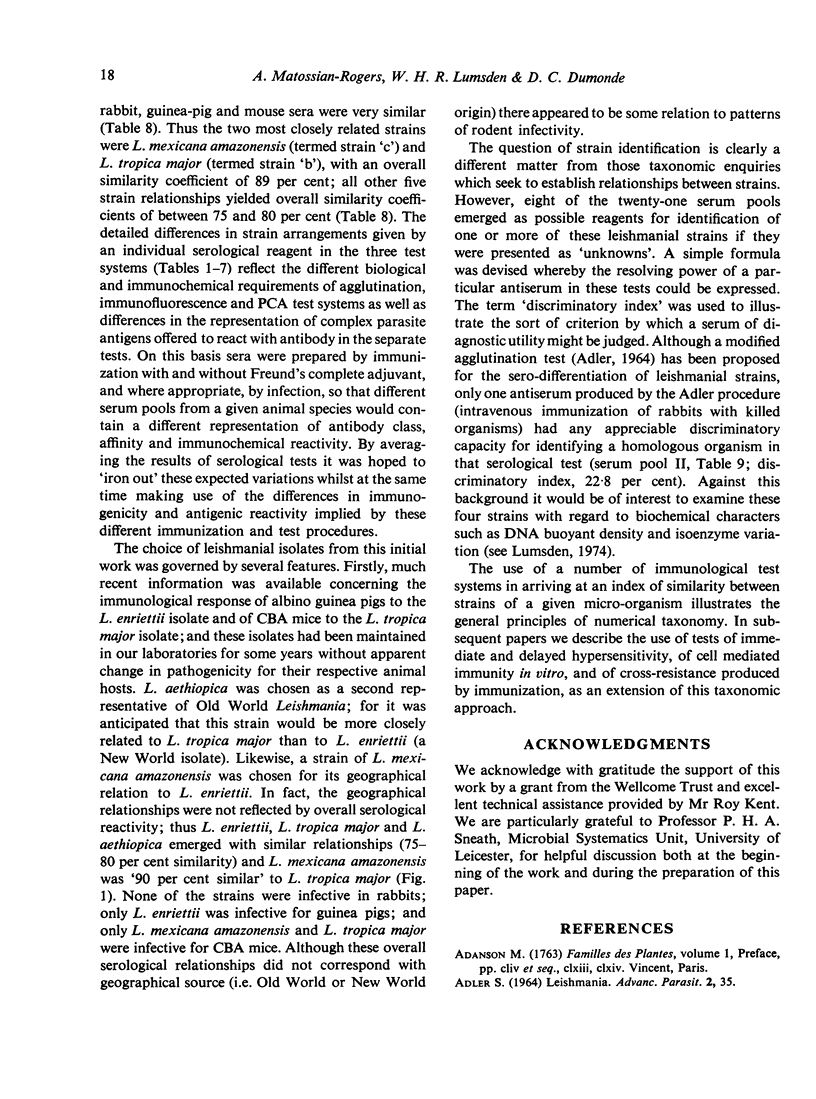
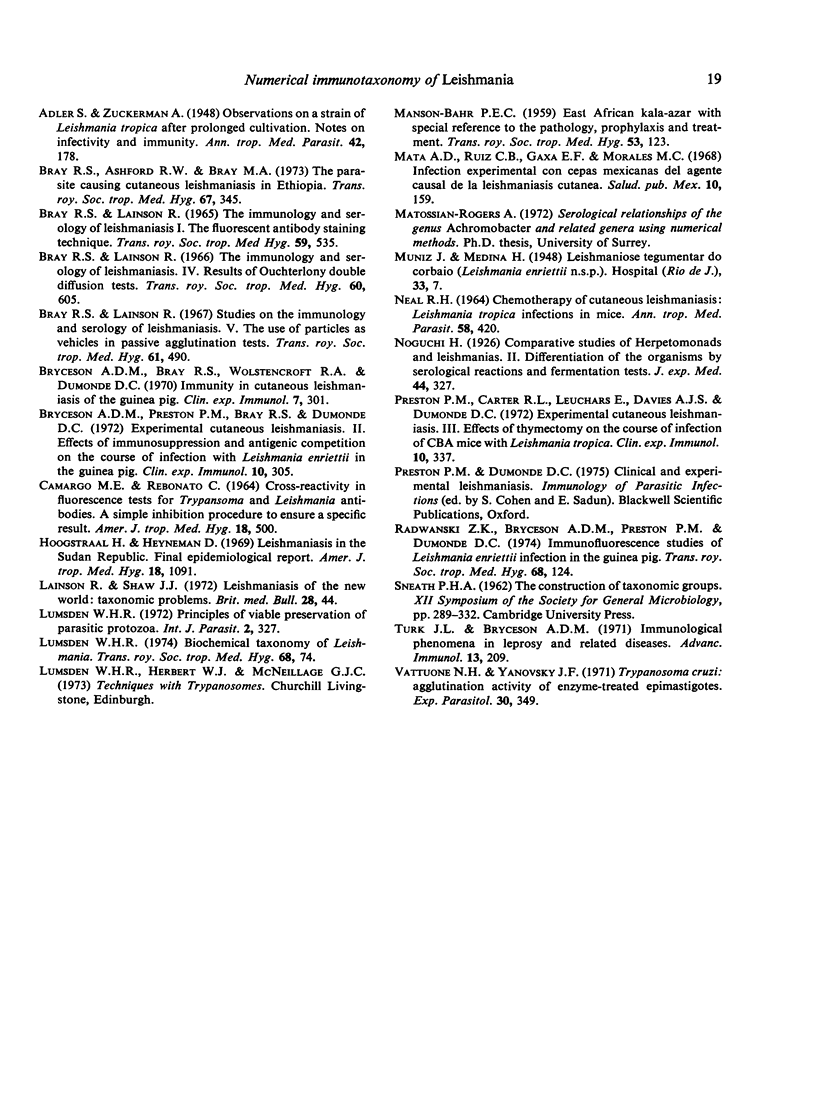
Selected References
These references are in PubMed. This may not be the complete list of references from this article.
- ADLER S. LEISHMANIA. Adv Parasitol. 1964;2:35–96. doi: 10.1016/s0065-308x(08)60586-2. [DOI] [PubMed] [Google Scholar]
- Bray R. S., Ashford R. W., Bray M. A. The parasite causing cutaneous leishmaniasis in Ethiopia. Trans R Soc Trop Med Hyg. 1973;67(3):345–348. doi: 10.1016/0035-9203(73)90111-9. [DOI] [PubMed] [Google Scholar]
- Bray R. S., Lainson R. Studies on the immunology and serology of leishmaniasis. V. The use of particles as vehicles in passive agglutination tests. Trans R Soc Trop Med Hyg. 1967;61(4):490–505. doi: 10.1016/0035-9203(67)90099-5. [DOI] [PubMed] [Google Scholar]
- Bray R. S., Lainson R. The immunology and serology of leishmaniasis. I. The fluorescent antibody staining technique. Trans R Soc Trop Med Hyg. 1965 Sep;59(5):535–544. doi: 10.1016/0035-9203(65)90155-0. [DOI] [PubMed] [Google Scholar]
- Bray R. S., Lainson R. The immunology and serology of leishmanisis. IV. Results of Ouchterlony double diffusion tests. Trans R Soc Trop Med Hyg. 1966;60(5):605–609. doi: 10.1016/0035-9203(66)90006-x. [DOI] [PubMed] [Google Scholar]
- Bryceson A. D., Bray R. S., Wolstencroft R. A., Dumonde D. C. Immunity in cutaneous leishmaniasis of the guinea-pig. Clin Exp Immunol. 1970 Sep;7(3):301–341. [PMC free article] [PubMed] [Google Scholar]
- Bryceson A. D., Preston P. M., Bray R. S., Dumonde D. C. Experimental cutaneous leishmaniasis. II. Effects of immunosuppression and antigenic competition on the course of infection with Leishmania enriettii in the guinea-pig. Clin Exp Immunol. 1972 Feb;10(2):305–335. [PMC free article] [PubMed] [Google Scholar]
- Camargo M. E., Rebonato C. Cross-reactivity in fluorescence tests for Trypanosoma and Leishmania antibodies. A simple inhibition procedure to ensure specific results. Am J Trop Med Hyg. 1969 Jul;18(4):500–505. doi: 10.4269/ajtmh.1969.18.500. [DOI] [PubMed] [Google Scholar]
- Dávalos Mata A., Briseño Ruiz C., Flores Gasca E., Cancino Morales M. Infección experimental con cepas mexicanas del agente causal de la leishmaniasis cutánea. Salud Publica Mex. 1968 Mar-Apr;10(2):159–171. [PubMed] [Google Scholar]
- Lainson R., Shaw J. J. Leishmaniasis of the New World: taxonomic problems. Br Med Bull. 1972 Jan;28(1):44–48. doi: 10.1093/oxfordjournals.bmb.a070892. [DOI] [PubMed] [Google Scholar]
- Lumsden W. H. Letter: Biochemical taxonomy of Leishmania. Trans R Soc Trop Med Hyg. 1974;68(1):74–75. doi: 10.1016/0035-9203(74)90261-2. [DOI] [PubMed] [Google Scholar]
- Lumsden W. H. Principles of viable preservation of parasitic Protozoa. Int J Parasitol. 1972 Sep;2(3):327–332. doi: 10.1016/0020-7519(72)90070-7. [DOI] [PubMed] [Google Scholar]
- MANSON-BAHR P. E. East African kalazar with special reference to the pathology, prophylaxis and treatment. Trans R Soc Trop Med Hyg. 1959 Mar;53(2):123–137. doi: 10.1016/0035-9203(59)90060-4. [DOI] [PubMed] [Google Scholar]
- NEAL R. A. CHEMOTHERAPY OF CUTANEOUS LEISHMANIASIS: LEISHMANIA TROPICA INFECTIONS IN MICE. Ann Trop Med Parasitol. 1964 Dec;58:420–430. doi: 10.1080/00034983.1964.11686264. [DOI] [PubMed] [Google Scholar]
- Preston P. M., Carter R. L., Leuchars E., Davies A. J., Dumonde D. C. Experimental cutaneous leishmaniasis. 3. Effects of thymectomy on the course of infection of CBA mice with Leishmania tropica. Clin Exp Immunol. 1972 Feb;10(2):337–357. [PMC free article] [PubMed] [Google Scholar]
- Radwanski Z. K., Bryceson A. D., Preston P. M., Dumonde D. C. Immunoflorescence studies of Leishmania enriettii infection in the guinea pig. Trans R Soc Trop Med Hyg. 1974;68(2):124–132. doi: 10.1016/0035-9203(74)90185-0. [DOI] [PubMed] [Google Scholar]
- Turk J. L., Bryceson A. D. Immunological phenomena in leprosy and related diseases. Adv Immunol. 1971;13:209–266. doi: 10.1016/s0065-2776(08)60185-6. [DOI] [PubMed] [Google Scholar]
- Vattuone N. H., Yanovsky J. F. Trypanosoma cruzi: agglutination activity of enzyme-treated epimastigotes. Exp Parasitol. 1971 Dec;30(3):349–355. doi: 10.1016/0014-4894(71)90098-1. [DOI] [PubMed] [Google Scholar]


